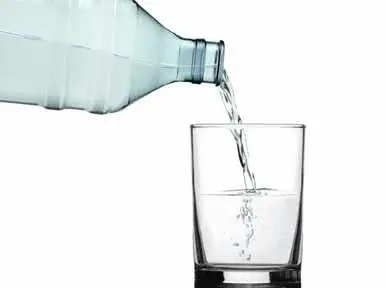Share on Social Media:
The Top 5 Countries with the Most Fresh Water
| Country | Total Water Resources (km3/year) | Average Precipitation (km3/year) | |
|---|---|---|---|
| 1 | Brazil | 8,233 | 15,236 |
| 2 | Russia | 4,508 | 7,855 |
| 3 | United States | 3,069 | 7,030 |
| 4 | Canada | 2,902 | 5,352 |
| 5 | China | 2,739 | 5,995 |
 Special Report
Special Report
- Less than 1% of the world's fresh water (or about 0.007% of all water on earth) is readily accessible for direct human use. Agriculture is the largest consumer of freshwater by far: about 70% of all freshwater withdrawals go to irrigated agriculture. The global daily drinking-water requirements per person, 2-4 litres, are minor compared with the 2,000-5,000 litres of water required to produce a person's daily food. Irrigated agriculture accounts for about 70% of all freshwater withdrawals worldwide and more than 80% in the developing countries. (b.)
- A person in America taking a five-minute shower uses more water than a typical person in a developing country slum uses in a whole day. Only 62% of the world's population has access to improved sanitation - defined as a sanitation facility that ensures hygienic separation of human excreta from human contact. At home the average American uses between 100 and 175 gallons of water a day. (a.) By 2025 the U.N. estimates that 1.8 billion people will live in regions suffering from water scarcity and two thirds of the global population will live under water-stressed conditions. (c.)
- Diarrhea remains in the second leading cause of death among children under five globally. Nearly one in five child deaths - about 1.5 million each year - is due to diarrhea. It kills more young children than AIDS, malaria and measles combined. In the developing world, 24,000 children under the age of five die every day from preventable causes like diarrhea contracted from unclean water. 884 million people lack access to safe fresh water supplies; approximately one in eight people. 3.575 million people die each year from water-related disease. (a.)
- Almost one-tenth of the global disease burden could be prevented by improving water supply, sanitation, hygiene and management of water resources. Such improvements reduce child mortality and improve health and nutritional status in a sustainable way. (a.)
- Investment in safe drinking water and sanitation contributes to economic growth. For each $1 invested, the World Health Organization (WHO) estimates returns of $3 - $34, depending on the region and technology. (a.)
- Water.org: Water Facts. Retrieved: 2010.
- AQUASTAT. (2003). "Global Information System on Water and Agriculture". Retrieved: Jan 28th, 2011.
- International Decade for Action: Water for Life 2005 - 2015. (2012). Retrieved: March 1st, 2012
Tags:
Water, Top 5 Most, The Environment
Sources: P. H. Gleick, Pacific Institute. (2013). Total Renewable Freshwater Supply by Country (2013 Update).
List Notes: Data is total renewable water resources (km3 per year estimated). The TRWR is calculated from: average precipitation, internal resources (surface & groundwater) and external resources (natural & actual). The accuracy and reliability of information vary significantly between regions, countries and types of data. No consistency can be ensured at regional level on the duration and dates of the period of reference. List last updated January 28th, 2015.
Sources: P. H. Gleick, Pacific Institute. (2013). Total Renewable Freshwater Supply by Country (2013 Update).
List Notes: Data is total renewable water resources (km3 per year estimated). The TRWR is calculated from: average precipitation, internal resources (surface & groundwater) and external resources (natural & actual). The accuracy and reliability of information vary significantly between regions, countries and types of data. No consistency can be ensured at regional level on the duration and dates of the period of reference. List last updated January 28th, 2015.

